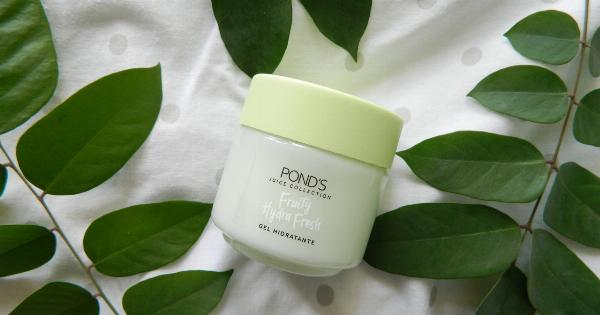Having oily skin can be frustrating and challenging to manage. Excess oil on the face can lead to breakouts, shine, and an overall greasy appearance. However, with the right knowledge and skincare routine, it is possible to keep oily skin under control.
In this article, we will discuss five essential tips to help you master oily skin and achieve a balanced complexion.
1. Cleanse Properly
The first and most crucial step in managing oily skin is to cleanse it properly. Cleansing removes excess oil, dirt, and impurities from the skin’s surface, preventing blockages and breakouts.
When selecting a cleanser, opt for one that is formulated specifically for oily skin. Look for keywords such as “oil-free,” “mattifying,” or “clarifying” on the product labels.
To cleanse oily skin effectively:.
- Wash your face twice a day – morning and night.
- Use lukewarm water to rinse your face.
- Apply a small amount of cleanser to your fingertips and gently massage it onto your skin using circular motions.
- Rinse thoroughly to ensure no residue is left behind.
- Pat your skin dry with a clean towel – avoid rubbing vigorously.
Remember, over-cleansing can strip the skin of its natural oils, causing it to produce even more oil to compensate. Stick to a gentle cleansing routine to maintain a healthy moisture balance.
2. Use a Toner
Toners are beneficial for oily skin as they help remove any remaining dirt or makeup residue and shrink the appearance of pores.
Look for toners containing ingredients like witch hazel, salicylic acid, or tea tree oil, as these can help control oil production and prevent breakouts.
To use a toner:.
- After cleansing your face, pour a small amount of toner onto a cotton pad or ball.
- Gently swipe the cotton pad across your face, paying extra attention to the T-zone (forehead, nose, and chin) – these areas tend to be oilier.
- Avoid rubbing or tugging on the skin, as this can cause irritation.
- Allow the toner to dry before applying any other skincare products.
Using a toner as part of your skincare routine can help remove any lingering impurities, leaving your skin feeling fresh and clean.
3. Moisturize Appropriately
Many people with oily skin skip moisturizing out of fear that it will make their skin even oilier. However, moisturizing is essential for all skin types to maintain a healthy moisture balance.
Instead of avoiding moisturizers altogether, opt for lightweight, oil-free, or gel-based moisturizers specifically formulated for oily skin.
Moisturizing regularly can:.
- Prevent your skin from overproducing oil to compensate for dryness.
- Keep your skin hydrated and supple.
To moisturize oily skin correctly:.
- Apply a pea-sized amount of moisturizer to your fingertips.
- Gently massage the product onto your face using upward circular motions.
- Focus on the drier areas of your skin, such as the cheeks, while avoiding over-moisturizing the T-zone.
- Allow the moisturizer to absorb fully before applying any makeup.
By choosing a suitable moisturizer and moisturizing regularly, you can ensure your skin remains properly hydrated without exacerbating oiliness.
4. Use Oil-Control Products
Incorporating oil-control products into your skincare routine can significantly help minimize oiliness and shine. Look for products that contain ingredients like niacinamide, clay, or sulfur, as these work effectively to regulate oil production.
Oil-control skincare products come in various forms:.
- Oil-control serums or treatments: Apply them before moisturizing to target excessive oiliness.
- Oil-control primers: Apply before makeup to create a mattifying base.
- Oil-control powders: Use throughout the day to touch up and absorb excess oil.
Remember, it is essential to read product labels carefully and choose those suited for oily skin. By incorporating these products into your routine, you can help control oil production and achieve a more balanced complexion.
5. Don’t Forget Sunscreen
Even though oily skin might make you think otherwise, using sunscreen is crucial for maintaining healthy skin. Sunscreen protects your skin from harmful UV rays, which can damage the skin and lead to premature aging.
When choosing a sunscreen for oily skin, opt for oil-free or non-comedogenic versions that won’t clog your pores. Look for a broad-spectrum sunscreen with a sun protection factor (SPF) of at least 30.
To use sunscreen effectively:.
- Apply sunscreen as the last step of your skincare routine, after moisturizer.
- Take a sufficient amount of sunscreen and evenly spread it across your face and neck.
- Allow the sunscreen to absorb before applying any makeup.
- Reapply sunscreen every two hours, especially if you’re spending time outdoors.
Remember, protecting your skin from harmful UV rays not only prevents damage but also helps maintain healthier-looking skin over time.
Conclusion
Oily skin can sometimes feel like a never-ending battle, but with the right approach, it is possible to keep it under control.
By following a proper cleansing routine, using toners, moisturizing appropriately, incorporating oil-control products, and never forgetting sunscreen, you can master oily skin and achieve a balanced, radiant complexion.


























